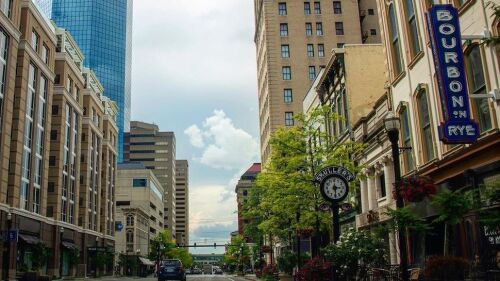It’s officially official. Imagine Lexington 2045, the city’s comprehensive plan, was adopted last week.
Led by the Lexington-Fayette Urban County Government’s (LFUCG) Division of Planning, the years-long process included multiple public input sessions, an evaluation of current conditions, an examination of land use, and so much more.
The final product? A 349-page plan that ensures long-range planning + urban growth to address the needs and contributes to prosperity of all Lexingtonians.
The group has laid out five themes, and throughout the next few weeks, we’ll be breaking down each one. Let’s begin today’s lesson: building + sustaining successful neighborhoods.
The key objective is to create welcoming neighborhoods that supports a diverse population, with a focus on the design of our city. This includes:
- Expanding housing choices
- Growing strategically through infill + redevelopment inside the Urban Service Boundary
- Providing well-designed neighborhoods and communities
- Addressing community facilities at the neighborhood level
- Ensuring equitable development + rectifying segregation caused by Lexington’s historic planning practices
Imagine Lexington identified three pillars to help facilitate these goals:
Design
The plan calls for a “putting-people-first” mentality + community-building mindset when it comes to updating or creating new developments. This includes equitable pedestrian infrastructure, open spaces and parks near residential dwellings, and inviting cityscapes that create connection.
Density
Even though the Urban Service Boundary will be expanded, public opinion showed an affinity towards infill and redevelopment. Policies outlined include incorporating residential units within commercial centers, encouraging more single-family home developments, and ensuring new construction matches the rhythm of existing developments.
Equity
Steps have already taken place to address the segregation caused by historic planning processes, but more will come through public education + policy creation. The plan also encourages new development to meet housing needs for all income levels.











